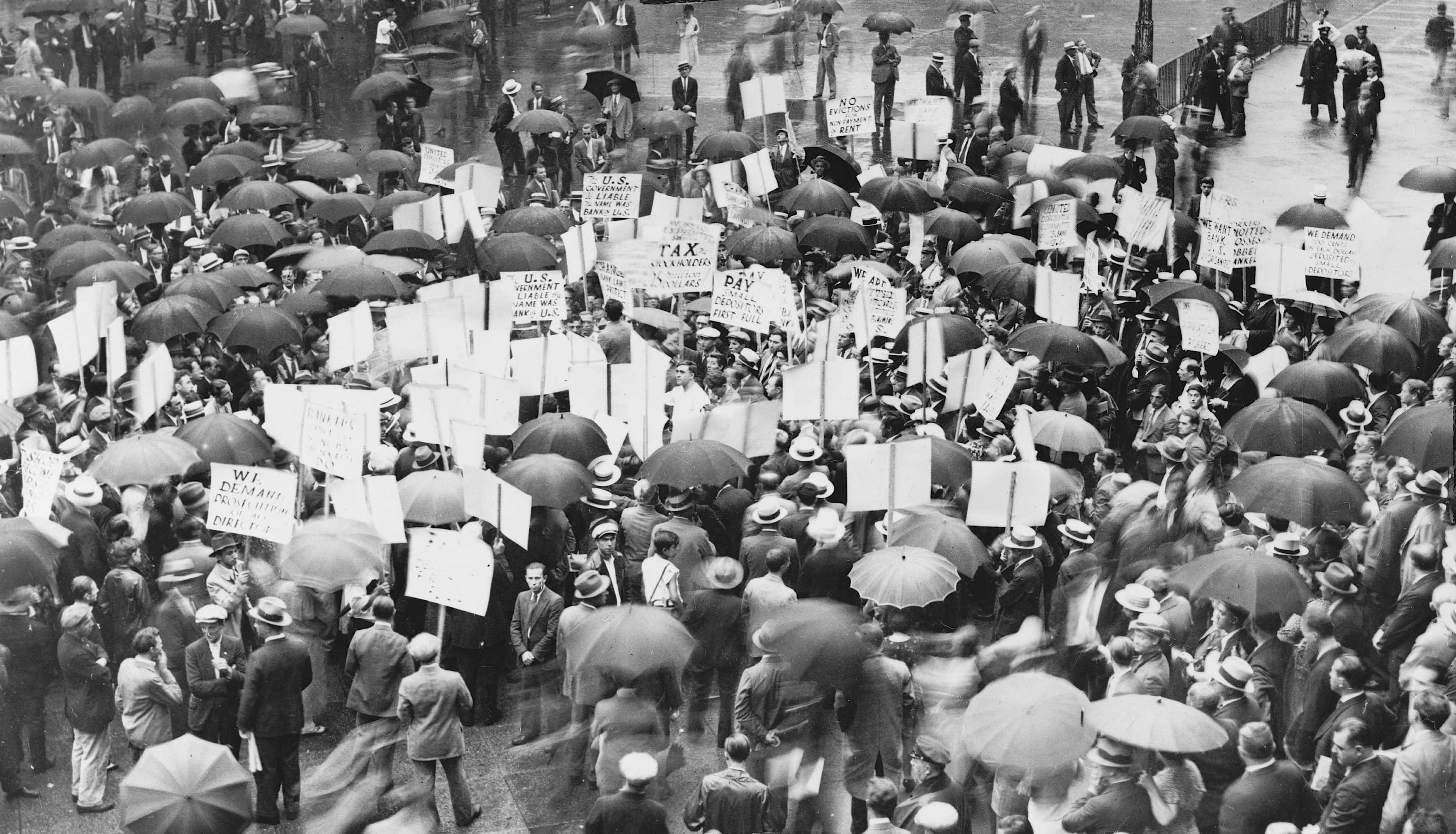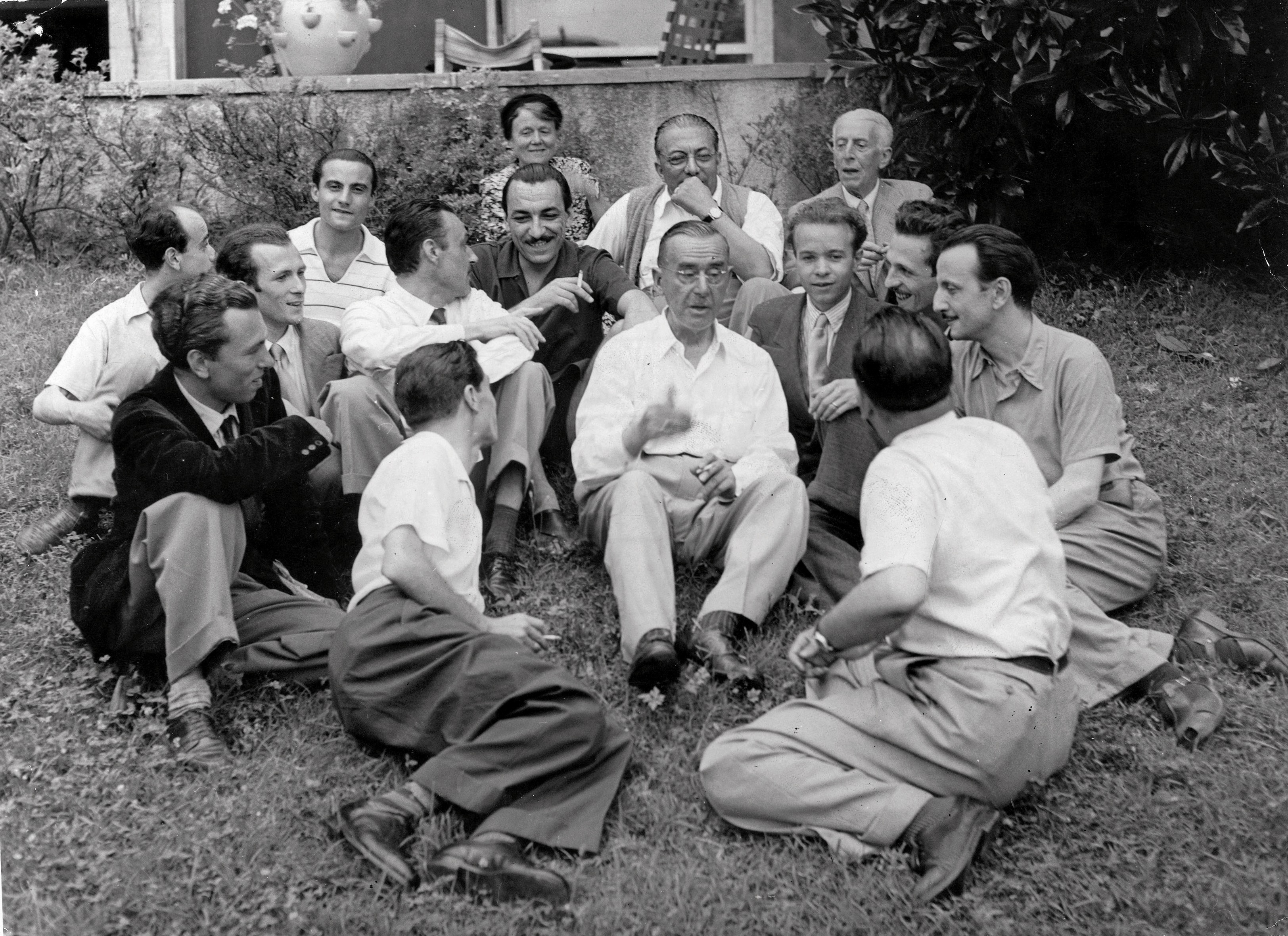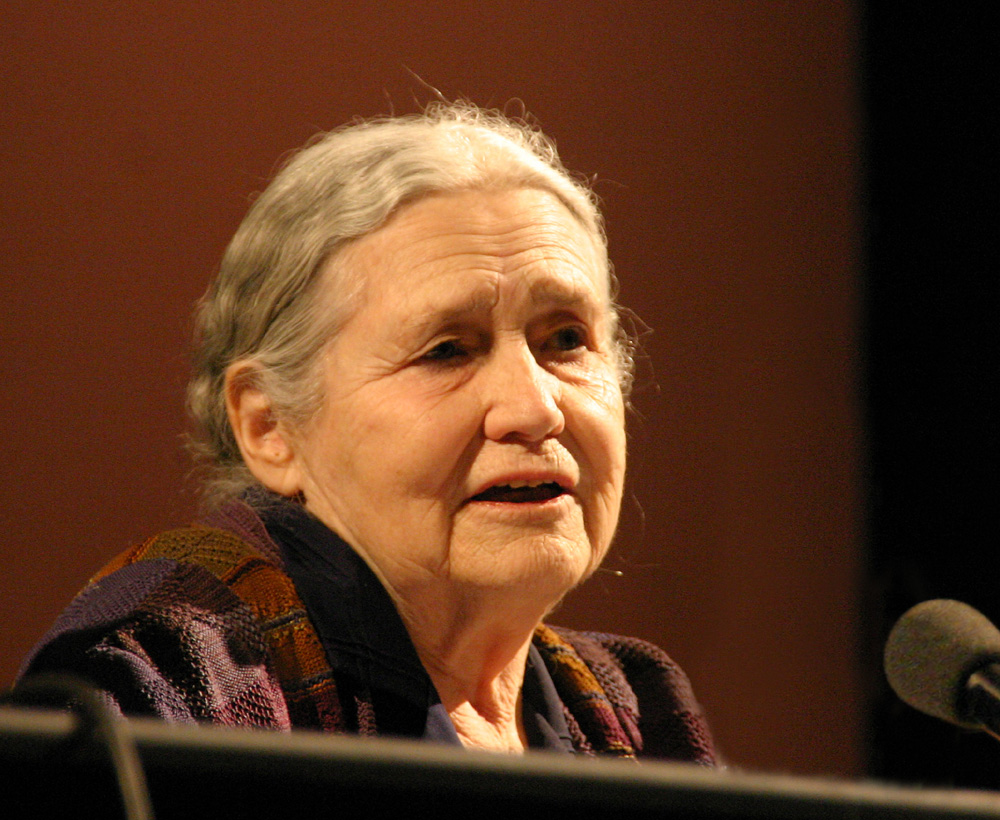In the 1930s, two crises came together: one artistic and one social. Artistically, writers had to confront the challenge of cinema, which threatened to be more immediate, more exciting, more popular than literature, and to leave fiction behind. At the same time, the depression of the late 1920s resulted in a huge rise in unemployment and mass poverty that led many writers wondering how they could make their work relevant and how they could write into being the socialism that lots of them thought was desperately needed.
Literature's response to social crises
Professor of Modern Literature and Culture
- How literature has had to respond to the challenge of social crisis? The historical context of a work is important to examine. Imaginative writing borrowing from cinema offers a valuable and fertile way to process technological change and social crisis.
- In Thomas Mann’s great post-war novel, Doctor Faustus, he found a way to be at once a German and an outsider, able to diagnose the Germans’ guilt and despair, but simultaneously clear that he himself was implicated in the tragedy.
- Doris Lessing’s The Golden Notebook explores what it means to be a free woman in a ground-breaking format that allows her to include every aspect of life.
Artistic and social crises
Throughout my career, I’ve been interested in moments when literature has had to respond to the challenge of social crisis. Writers have responded formally and created what might be seen as difficult works of art. I think it’s important to read in a way that’s attentive both to the historical context of the work and to the formal dilemmas that writers set themselves. I’ve written a series of books bringing these together to look at how writers experiment formally in the service of a social vision.

Crowd of depositors gather in the rain outside Bank of United States after its failure.1931.
These two crises came together for a group of writers who looked to socialist films for inspiration. They were inspired, in particular, by Russian filmmakers Eisenstein and Vertov and by lots of German expressionists. They used the example of these films to pioneer a kind of writing that used cinematic technique to expose class inequality in particular. At the same time, they tried to use cinematic technique to write for a mass audience, thinking that if they could make their writing more cinematic, it would also become more immediate and more popular.
Cinematic works
For example, we get Christopher Isherwood’s Berlin Diary, which became the model for the musical Cabaret. Isherwood announces early on, I am a camera, and then proceeds to use techniques like montage, chiaroscuro and close-ups to crosscut swiftly between working-class and upper-class lives. We get more overtly communist novels like John Sommerfield’s 1936 May Day, which is a cinematic cross-section of people involved in a communist upheaval in London, and we get the more avant-garde experimental writing of the American writer John Dos Passos, whose U.S.A. is a jamboree of montage people, moments and styles. Or, we could think of Henry Green, pseudonym of Henry Yorke, whose 1929 novel Living crosscuts between the workers and bosses in a factory. What’s great about Green is he revels not just in the cinematic techniques he can use to jump between these different perspectives and lives, but also in writing cinematically about cinema itself. There are some rather moving scenes in which characters go to cinemas and watch films, and you can see them being really seduced by the cinema. This is complex, imaginative writing that I think offers an important and fertile way to process technological change and social crisis.
Techniques taken for granted
Lots of these writers are interested in finding ways to write about mass experience, and that’s why Sommerfield focuses on a huge demonstration, and why Green focuses on workers involved in the factory there. That’s also seen in Living, where people go to a football match. How can you characterise a crowd? I think these writers find visual solutions for characterising mass experience, which they very much get from cinema.
These techniques that were developed quite subconsciously in the 1920s and 1930s have now become mainstream in literature. It now wouldn’t occur to a writer that there’s a challenge in jumping quickly between two different characters who may not know each other. We’ve internalised those as normal modes of storytelling, though, actually, those techniques began quite subconsciously a century ago.
Thomas Mann himself

Italian publisher Arnoldo Mondadori with author Thomas Mann. Wikimedia Commons. Public Domain.
In 1945, half the world lay in literal ruins. So many of the great cities of Europe had been turned to rubble and so many of the values that had underpinned what had seemed to be civilisation had been shot apart, too.
Thomas Mann is a writer I’m very interested in. He escaped to America in the 1930s, but remained almost totally caught up in German culture. In his great post-war novel, Doctor Faustus, he found a way to be at once a German and an outsider, able to diagnose the Germans’ guilt and despair – with a clarity possible to very few people in Germany – but at the same time clear that he himself was implicated in the tragedy.
Before writing the novel, just as the war ended, Mann gave a lecture called “Germany and the Germans” at the American Library of Congress, where he said that there’d been a secret union of the German spirit with the demonic. Germany, he said, had made a Faustian pact with the devil, and German romanticism, with its tenderness, passion and reverie, had resulted both in the pan-Germanism of Bismarck and the death-driven megalomania of Hitler. I think what made this speech very moving was that Mann saw himself as part of this. He was an artist who’d been seduced by German romanticism.
The devil in Doctor Faustus
It’s a complex novel about guilt, art and ruin. There are long dialogues with the devil. There are very moving descriptions of the destruction of Germany’s cities from the air. There are long passages devoted to describing atonal music. It’s significant, I think, that in the account you find in Adorno, atonality is at once a registration of a defence against barbarism.
In Doctor Faustus, Mann took his suggestion that Germany had made a pact with the devil as his starting point and told a story that relates the two simultaneous downfalls of his tragic artist hero Adrian Leverkühn, a composer, and Germany itself. The narrator is a teacher who’s spoken out against Nazism and lost his post, and he’s telling the story of Leverkühn as one he’s very personally involved in. He’s loved him since they were children and continues to love him, even after he finds out that Leverkühn has made a pact with the devil, of the kind that he sees his country making, too.
What emerges is a very complex novel about guilt, art and ruin. It’s layer after layer of rather difficult writing. It includes long dialogues with the devil. It includes very moving descriptions of the destruction of Germany from the air. There are long passages devoted to describing atonal music, which we can see is a response to the crisis of this period. Schönberg’s a touchstone for Mann, and it’s significant that in the account, you get in Adorno, of Schönberg, that music becomes itself a registration of and defence against barbarism. That music becomes itself a registration of and defence against barbarism. So, it’s a profoundly German novel that at the same time is engaged in condemning German culture as demonic. What we get is this peculiar mixture, this pastiche. There’s a gnostic farce, and it’s all characterised by dark exuberance and ambivalence to German culture and history that’s working itself out at every level of tone and narrative.
Doris Lessing’s The Golden Notebook
Moving on a decade or so to the 1950s and 1960s, I found Doris Lessing an imaginative writer of the first order, who responded to her own historical crossroads, particularly when responding to the crisis of the organised left that coincided with the rise of insurgent new versions of feminism. When Lessing came to write her 1962 masterpiece, The Golden Notebook, she found she needed to produce an enormously elaborate literary contraption in order to articulate the kinds of intellectual and moral freedom that she was finding in this period. It’s the story of Anna Wulf, who is living the life of what she calls a “free woman”. She’s a loving mother, but she’s rejected the model of family life and is prepared to start and end sexual relationships fairly frequently until she finds the intellectual, emotional and physical love that she’s looking for. In the meantime, she’s insistently questing experience. She says, “I’m interested only in stretching myself and living as fully as I can”.

Doris Lessing, British writer, at lit.cologne, Cologne Literature Festival 2006, Germany. Wikimedia Commons. Public Domain.
The novel is Anna’s story, and it’s split into five notebooks, which is where the complexity comes in: there’s a black notebook for Africa, a red notebook for communism, a blue notebook for the diary sections, a yellow notebook for her drafts of writing and a gold notebook at the end for the breakdown that, in fact, turns out to be a form of breakthrough. Through the structure, Lessing enables every aspect of life to be in her novel, and that’s what makes it so ground-breaking. She enables it all to blend together more freely than it may sound when I describe the notebooks. By the end of the novel, it’s easy to forget which section is which. There’s a mess of dreams and newspaper clippings and autobiography and fiction, and often the same incidents: a return to them again and again in different sections.
The formal structure is itself peculiarly freeing and allows Anna to escape from that notion of the free woman, which turns out to be as constricting as it is liberating. At the same time as being nuanced about sex, the novel is very nuanced about politics. We see it has various time periods at once. You can see Anna committing to communism and, juxtaposed with that, her losing her faith in the Communist Party, with her joining the party and then leaving it. She talks about there being two personalities that she’s torn between: the communist and Anna. Increasingly, nothing can be taken for granted. This is probably most true when it comes to the actual mode of telling the story. This is Lessing responding to her moment of crisis by rethinking the whole question of what a novel can be. Her brilliance was to turn the crisis of the left and the crisis of women’s lives into a formal question without losing social purchase.
What interests me is that every moment in times of great social crisis, literature’s found ways not just to represent the crisis, but to test itself with moments of formal experiment and to make difficult works of art in the context of political and social upheaval. I’m very interested to see what will emerge now, after our couple of years of crises with COVID, with Black Lives Matter. I think it’s an exciting time and I expect to see experimental works of difficult fiction coming in to engage with them.
Discover more about
art after social crises
Feigel, L. (2016). ‘ The Bitter Taste of Victory: In the Ruins of the Reich . Bloomsbury Publishing
Feigel, L. (2018). Free Woman: Life, Liberation and Doris Lessing. Bloomsbury Publishing.
Feigel, L. (2010). Literature, Cinema, Politics 1930-1945: Reading Between the Frames. Edinburgh University Press.
Mann, T. (1947). Doctor Faustus.. Penguin.
Lessing, D. (1962). The Golden Notebook.. HarperCollins Publisher UK.